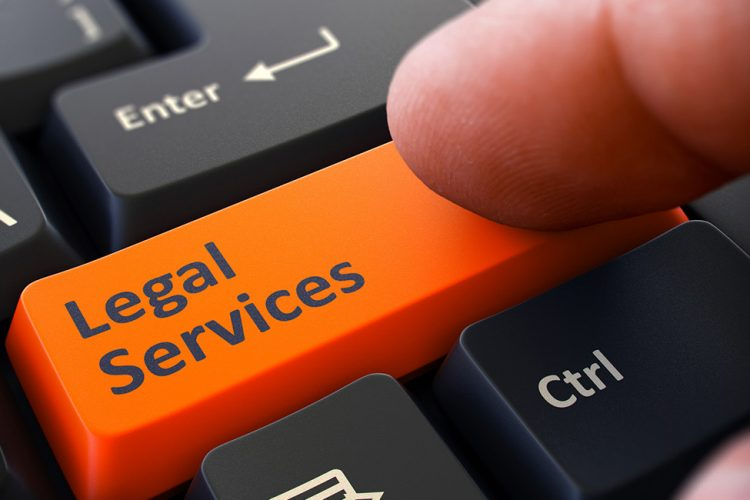Now Reading: Handwriting Analysis: Comparing Dominant-Hand Writing to the Non-Dominant-Hand Writing of the Same Person
-
01
Handwriting Analysis: Comparing Dominant-Hand Writing to the Non-Dominant-Hand Writing of the Same Person
Handwriting Analysis: Comparing Dominant-Hand Writing to the Non-Dominant-Hand Writing of the Same Person
Handwriting is the way of communicating idea’s, information or messages between two or more people. This method of communication may include the use of certain visual signs, marks, drawings, paintings, embossing, etc. All the actions taken to complete this process are unique to each individual and thus serve the purpose of providing the personal details and characteristics of the person who’s handwriting is being analyzed.
Humans had developed this skill of using handwriting to convey message to each other from very ancient time. Initially they used some engravings on the walls of the cave and then later started to use paintings. This was later followed by the usage of certain symbols which were used for conveying the message to the next generation. With time humans gained the art of coordinating their muscles of hand so well that it gave rise to a legible form of writing which they used for communicating with each other.

Fig. 1 – Different styles of writing seen over several centuries [2]
However, the peculiarities which make the handwriting unique to an individual developed with the age and practice. At the initial stages of practicing this art the individually mostly copies the text. Eventually with the passage of time this taught pattern starts to show certain deviation which arise due to the specific movements of hands. These changes in the handwriting are always gradual and not sudden; unless the person suddenly falls too ill.
Writing is a skill learned through repetition. This skill requires the concerted effort of the brain, muscles, and nerves. Thus, no two people write exactly alike. The Individual characteristics that are unique to a particular writer exist in every person’s handwriting which is accompanied with the natural variation. It has also been seen that no one can exactly duplicate what they have written.
Many people adopt writing styles by deviating from the method they were taught. But many writing habits are subconscious and therefore cannot be changed by the writer.
A writer can be easily identified by his or her subconscious habits. The normal form of writing is based on the mental images of learned letter designs. Handwriting changes over the course of lifetime. But substance abuse affects handwriting adversely. Other factors like illnesses, trauma, and emotions may also result in changes in handwriting. From studying the handwriting characteristics, it is not possible to determine the cause which led to the change in the handwriting pattern.
Some of the facts about the handwriting are:
- The lines will have initial blunt strokes if the writer places the pen on the surface, before starting to write.
- There will be a blunt ending on the words if the writer stops the pen before lifting it from the paper.
- the initial and terminal strokes will be tapered or faded if the writer has the pen in motion at the beginning and ending of writing.
- The proportions between uppercase and lowercase letters generally remain the same, even if the writer changes the size of the writing.
- The depth of pressure will be affected with the writing surface.
Fig. 2 – “Writing with Left Hand” by indi.ca . [www.creativecommons.org/licenses/by/2.0/]
Principles of Handwriting Identification [1]
- Identification requires differentiating the natural variation of a writer from another writer.
- Writing can be identified as belonging to an individual when there are sufficient common characteristics of writing habits and no basic structural differences.
- Any major structural difference in writing is sufficient to prove that the writing being compared does not belong to the same writer.
- One distinctive characteristic is not sufficient to identify a writer.
- Hand printing and numerals can be compared and identified like handwriting can be.
- Imitated writing intentionally bears resemblance to the writing from which it is being copied.
- Imitated writing is usually drawn, not written.
- Drawn writing generally lacks pressure variations.
- Imitation tends to conform closely to a fixed form and does not display the [1]unconscious abandon that produces natural variation in genuine writing.
- Exact duplicates of original signatures can only be obtained by copying the original signature usually by cutting and pasting it manually or electronically.
- A tracing may have less detail than the original from which it is traced.
- A tracing may deviate from the original owing to slippage of the tracing paper or the deliberate moving of the paper to distort the copy.
- No one can duplicate all of the intricate subconscious writing habits of another in an extended writing sample.
- Some people are highly skilled in imitating other’s hand writing.
- Freehand simulations by a skilled writer can be difficult to detect because obvious signs of forgery may not be evident.
- Obvious signs of forgery include patched writing, hesitation as revealed by ink blobs, pauses in the writing, tremor causing poor line quality, and erasures.
- Presence of any of the signs of forgery does not suffice to indicate that the document in question is not genuine because any of the signs could be part of the writer’s normal habits.
- Blunt initial and/or terminal strokes can indicate forgery, but the presence of blunt strokes is not proof of forgery.
- Determination of lack of genuineness depends on multiple factors, that is, more than a single indicator.
- Individual characteristics in writing are deviations from class characteristics and are valuable in determining the identity of the writer.
- The more diverse and unusual the accumulation of mutual characteristics and individual handwriting habits, the more positive the identification of the writer.
- Forgers make mistakes.
- Forgers tend to copy the pictorial effect of the writing, but they overlook the idiosyncrasies and subtle habits of the writer.
- It is impossible to maintain a successful simulation of a lengthy document. The more written, the more the writing reverts back to the natural characteristics of the writer because concentration wanes.
- In comparison of handwriting, it is necessary to compare line quality, pressure patterns, letter forms, initial and terminal strokes, connecting strokes, diacritics, T-bars, punctuation, spacing, proportions, idiosyncrasies, slant, alignment, and any hooks or ticks on letter forms.
- Some characteristics that are not taught in any penmanship system have become class characteristics because many writers share them. An example would be a Greek epsilon (ε).
- Family members frequently share handwriting characteristics.
- There can be striking resemblances between two individual’s handwritings.
- It is not possible to identify a writer if there is a lack of sufficient materials for comparison.
- A writer can intentionally alter or distort the appearance of his or her normal writing.
- Some characteristics of the writer will be evident even when a writer alters or distorts his or her handwriting.
- The average writer cannot maintain the intense concentration needed to maintain a disguise through extended writing samples. The more he or she writes, the more the writing reverts back to his or her natural characteristics.
- Numerals and punctuation are rarely disguised.
- Disguise is rarely consistent.
Factors Influencing Handwriting
- TRAINING
It is related to the initial stages of handwriting development in which the person follows a specific pattern given in books. The way a person holds the pen also changes gradually. This gives rise to different slants and different letter design which forms the basis of the handwriting peculiarities with maturity of a writer.
- RACE AND NANTIONALITY
The writing of different races and nationalities in the world is marked and varied in its idiosyncrasies. The writing of every area is found to have similar style.
- HEREDITY
Like speaking and walking, the handwriting of family members may match to some extent.
- SEX
The sex of a person influences handwriting because of the different approaches they take in life. It has been commonly seen that women are more effected by decoration and thus produce handwriting which have decorated letters. Similarly, men being rough do not giving much importance to letter decoration and focuses on the completion of writing.
- MUSCULAR FUNCTIONING
The writing can be distinguished from each other by studying the individual features of the generalized form. These individual characteristics result from the muscle coordination including the movement of the forearm, fingers and the wrist of the person.
Kinematic Prospective
Writing is a fine motor skill which requires fine-tuning of the finger’s position. This ability led to the concept known as motor equivalence.
The Motor Equivalence Theory supports the writing motor program. The writing motor program consists of movements in the order of event sequences and timing that can be executed by any limb. Thus, explaining the substrate how to perform the same task with different limbs. The right-handed subject still prefers writing skilfully with the right hand than the left limb?
The skill of writing, even with the use of dominant hand takes sufficient amount of time and practice. Alternatively, dominant hand writing could rely on better connections between brain areas involved in the writing motor program and brain areas controlling the dominant hand rather than a different anatomical substrate.[2]
Certain disorders such as writer’s cramp. It is a type of task-specific focal hand dystonia (FHD) in which patients lose the ability to write with their dominant hand.
Case Study [2]
The study endeavours to establish whether an individual can be trained to write comfortably and legibly with their non-preferred hand in a period of several weeks.
The phenomenon of handedness has sparked many debates. It is a mystery whether one hand is preferred over the other because it is more skilled, or one hand is more skilled than the other because it is preferred. When new tasks are learned it is often observed that regular practice helps in improving the performance with time but, this will however not reach or exceed the level of skill of the preferred hand. Certain studies suggest that it is possible for the non-preferred hand to be trained to write legibly as with the preferred one.
There is no difference in simple motor task control, strength, or positioning between the preferred and non-preferred hand.
According to the study the high-quality writing with the non-preferred hand could be seen after minimal practice. Thus, learning of handwriting occurs at the muscle recruitment level and not at the cortical level.
A total of 32 individuals, both male and female, of various ages, had participated in this study. 21 participants who were aged 20 to 56 years completed the requirements of the study.
The hand preference of each participant was established and used a s a control. Each participant was provided with a workbook of 28 lined pages. As a task they were supposed to fill it once daily for 4 weeks. On each day they had to write the line ‘‘The quick brown fox jumped over the lazy dog’’ twice using their non-preferred hand. On the completion of the training period, the workbooks were collected and their daily entry was scored.
The legibility score was assigned to the daily tasks of the participants. This score was obtained by comparing the handwriting with that of the controlled samples, obtained on the initial days of the training. These scores ranked 1-10, where 1 stood for the most varied and 10 for the most identical to the control sample.
Analysis was performed by comparing letter slant, size, spacing, shape, and smoothness as well as overall word spacing. Each individual’s progress was determined by the change in their legibility score over time.
The increase in the legibility scores over-time gave the extent of trainability whereas regression was used to show trends in each individual’s progress.
At the end of the study, most participants noted that as the study progressed, they felt more comfortable in holding the pen with their non-preferred hand, which indirectly allowed them to write more quickly. The participants had also noticed that as the speed of their writing increased, their legibility tended to decrease, which accounted for the irregular changes in legibility scores seen towards the end of the training period.
Fig. 3 – Handwriting of a 20-year-old strongly right-handed female. (1a) Preferred-hand (right hand) writing on day one of training; (1b) Non-preferred-hand (left) writing on day one of training; (1c) Non-preferred-hand (left) writing on day 13 (middle) day of training; (1d) Non-preferred-hand writing (left) on day 28 (last day) of training period [2]
CONCLUSION
The findings of the present study may have implications on highly specialized skill training that requires use of the non-preferred hand in complex tasks like writing.
A general increasing trend in the quality of non-preferred-hand writing was observed in all the participants. Some individuals however displayed certain random variations in their daily scores.
The factors which could have affected an individual’s legibility score include:
- The time of day the study at which the task was completed
- The concentration level of the participant at the time of completing the task
- The position of the participant’s hand
- The type of pen used
- Circadian rhythm as it can influence an individual’s performance of a task which involves coordination, such as writing
It was observed that the form and style of the letters and the words written with the non-preferred hand were similar to those written with the individual’s preferred hand.
The guidelines for the study were good but not ideal as various life occurrences and the time for task performance of each participant were a major variable.
Thus, it may be concluded that the strong dominance of one hand over the other results from the biological or social preference of its constant use, leading to the improved performance with sufficient training of the hand.
References
BIBLIOGRAPHY Henneberg, K. L. (2012). Writing with non-dominant hand: left-handers perform better with the right hand than right handers with the left. Anthropological Review.
L. Walker, M. H. (n.d.). Writing with the non-dominant hand: Cross-handedness trainability in adult individuals. Laterality: Asymmetries of Brain, Behaviour, and Cognition.
Principles of Handwriting Identification. (n.d.). In K. M. Koppenhaver, Forensic Document Examination: Principles and Practice. Humana Press Inc.
Silvina G. Horovitz, C. G.-u. (July 2, 2013). Functional Anatomy of Writing with the Dominant Hand. journal.pone.
[1] CITATION KMK l 16393 (Principles of Handwriting Identification)
[2] CITATION LWa l 16393 (L. Walker)












